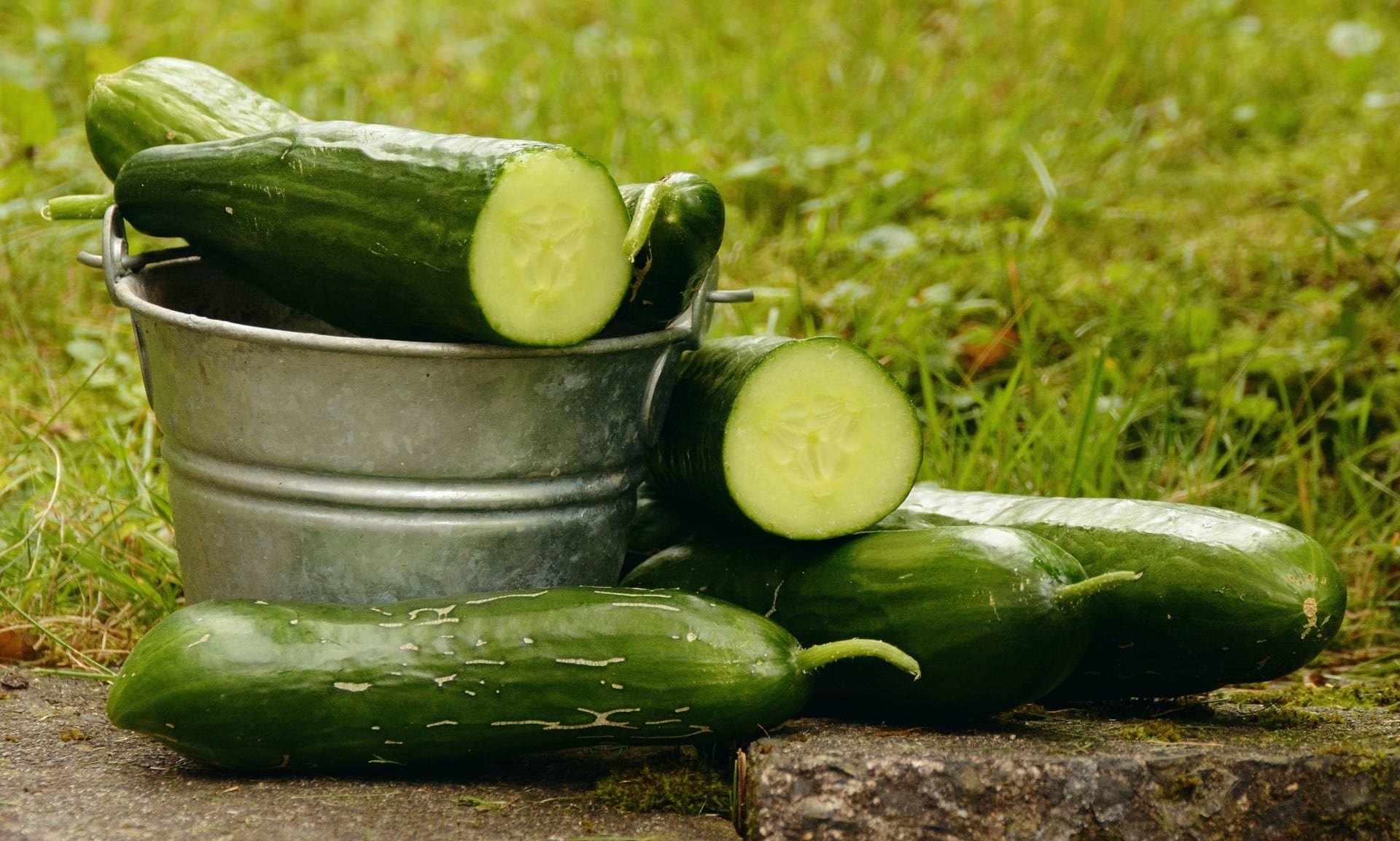
Vertical Gardening for cucumbers and pickle cucumbers
Vertical Gardening for cucumbers and pickle cucumbers
Cucumbers and pickle cucumbers (Cucumissativus) are creeping herbaceous plants of the same family as the calabash, melon or squash. Grown for their fruits, the cucumber is used as a vegetable and the pickle cucumber as a condiment.
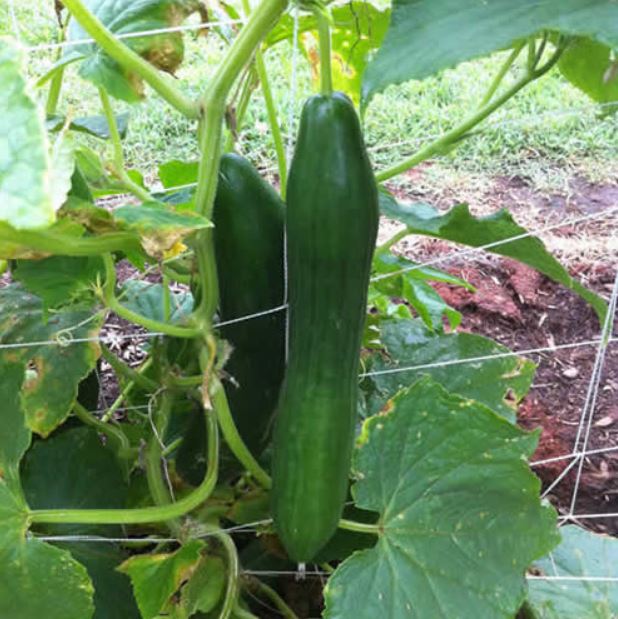
Most cucumber varieties are said to be, «runners.» They produce long stems and can easily require 2 sq m. to 3 sq m. of space in a garden; not quite practical for a small vegetable garden. An ideal solution for limited surface areas is to grow your plants vertically on trellises having them climb a wood mesh, for example. Simply position the plants at the base and the cucumber tendrils will do the rest. This method is practical, simple, the fruits have a better exposition to light, prevents soiling and fruits are easier to pick. This technique has a better overall performance. It is well suited for pickle cucumbers. Most crawling fruit varieties need vertical support as they grow.
You can use trellises, pegs, sections of a fence, or any material you have on hand. As the plants grow, delicately wrap the creeper tendrils around the trellises.
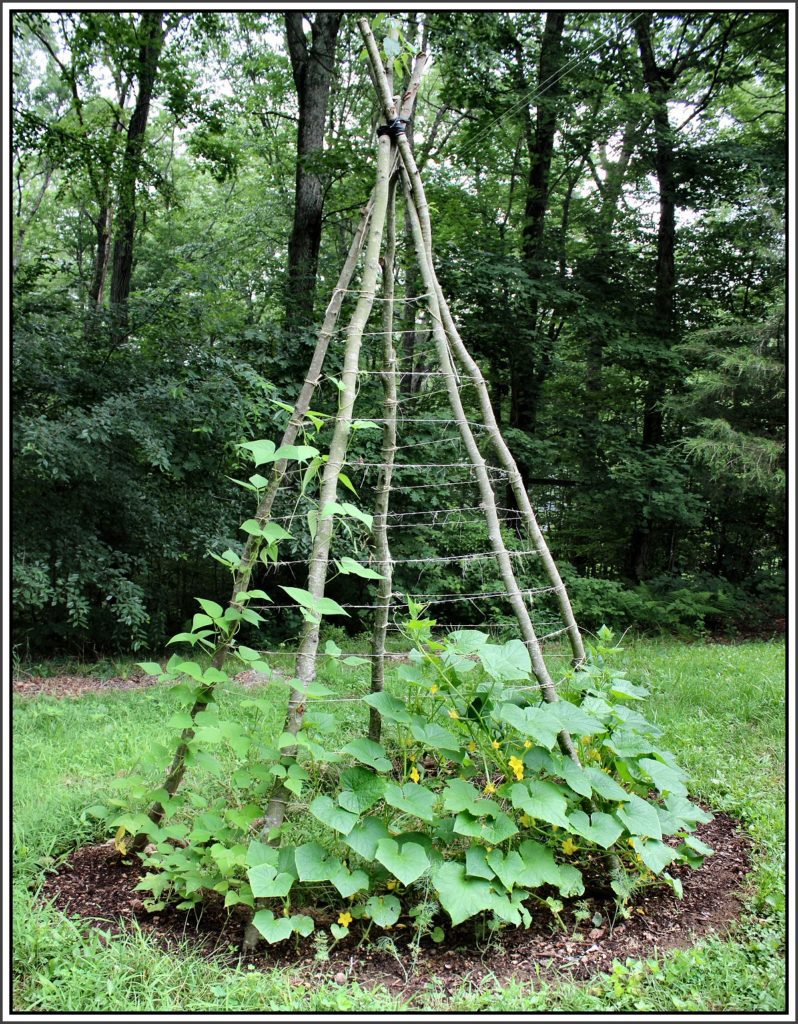
Container: To grow cucumbers vertically, you will need a container of at least 30 cm (12’’) wide by 30 cm (12’’) deep.
The number of cucumbers you will be able to grow in such a container depends on the variety you select. About two (2) plants for a traditional long root’s variety and three (3) plants for a short root ‘’patio’’ variety.
Trellis
Teepee (bamboo): You can make a teepee frame with old branches or thin bamboo straps or burlap fabric held together with twine or wire. As the cucumbers progressively grow, you simply attach the tendrils to help the climb.
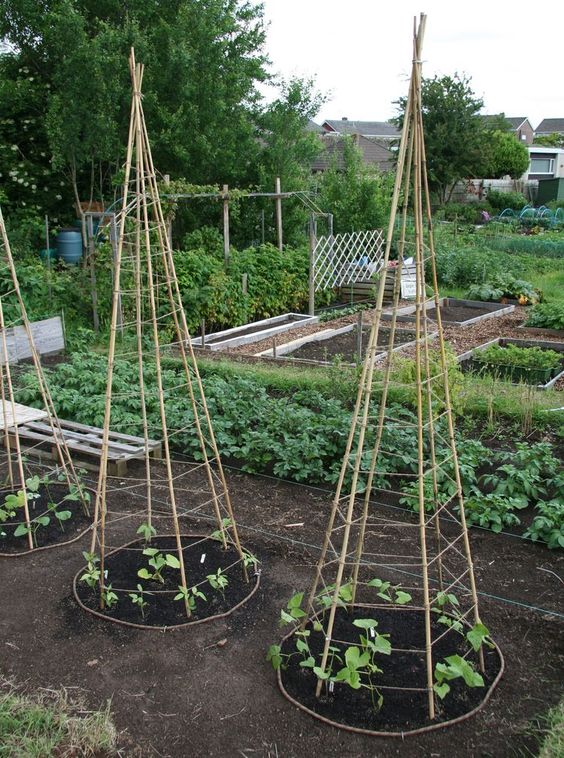
Inclined trellis: This system simply requires to tilt (incline) a trellis against a wall. Inexpensive system, you can use wooden sticks or bamboo poles, burlap fabric and twine or wire. The difficulty lies in the way to attach the sticks together, making sure the structure is stable. You can also place 2 trellis structures, one against the other, separated at the base, touching each other at the top. This could also tutor two opposite sides of plants.
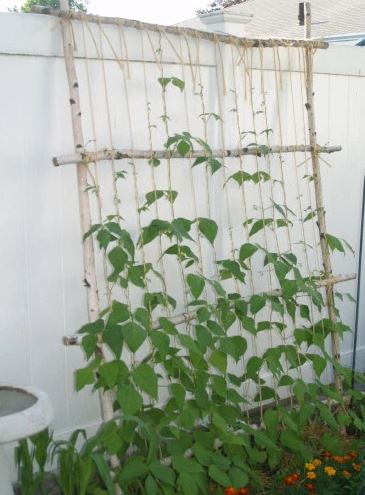
Trellis size: Select a robust trellis of 1.5 m (5 to 6 feet) in height, making sure it cannot fall over. If you use a climbing variety, use a trellis with a frame in order for the vines to grow easily towards the top and the bottom.
Position: Cucumbers need to be out of the wind and have a good hot sun exposure. The ideal temperature for cucumbers is from 15 °C to 35°C (60°F to 95°F). Growth will stop at a temperature of 10 °C (50 ° F).
Soil: Cucumbers need to be in a deep, well-drained and loose soil, rich in organic matter and with a neutral pH.
Propagation and cucumber transplantation
Sow seeds directly at the desired location or in small containers. Cover them with about 2 cm of soil. Once germination is started and have a few leaves, transplant the healthier ones in a large container or on the ground, free of frost, in spring or in summer when temperatures reach about 20 C° (70 F°). Cucumber plants are greedy like tomatoes, prepare the soil well before transplantation by adding decomposed manure and compost.
Recommended tips for vertical gardening
Moisten the ground. If the ground is dry, humidify it before adding the seeds. It is important to the soil to be well watered at all growth stages. For example, by humidifying the soil before sowing you will reduce the risk of losing the seed during watering. Insert one or two seeds between 1.5 cm and 2.5 cm deep in the ground.
- Plantations must be spaced from each other about 50 cm to 1 m whether you sow young plants or seeds. Note: bushy varieties can be closer than creeping varieties.
- Add mulch once the seeds are germinated. To cover the ground will help limit bad weed and maintain the soil warm for the cucumbers.
- Organic mulch such as straw or wood chips must be added after germination of the plant and when the soil is warm. Note that plastic mulch can be used right after sowing.
- Dark plastic mulch is particularly good to maintain heat and humidity.
Watering
Because of the cucumber’s high-water content, regular and deep watering is the key to a productive harvest. During watering, avoid wetting the leaves, it could cause fungal diseases. Water cucumbers regularly, they need a lot of humidity throughout their life cycle.
- Using a hose or watering can, water generously at least once a week. You can water in at least 2.5 cm each time.
- You can also install a drip irrigation system to control the water intake. Such a system can be efficient because it will not wet the leaves thus, limiting any source of disease.
- It is particularly important to have an adequate humidity level when the fruits start to grow.
Fertilizer: Use a soft liquid fertilizer for the soil approximately every 15 days to maintain a good soil quality.
When planting, add a slow-release fertilizer in the ground. Once blooming starts apply a balanced liquid fertilizer following manufacturer’s instructions.
If you did not use a granular fertilizer when preparing the soil, fertilize the ground with a liquid input every 15 days. If you use a non-organic fertilizer, do not touch the leaves or fruits when applying.
If you apply a fertilizer before planting your cucumbers, you will need to apply again once the runners show on the creepers and the flowers start to bloom.
If the flowers become yellowish, it is a sign that you need a nitrogen-rich fertilizer.
Note: do not use too much fertilizer on your plants. It could impact on the fruit growth and limit the harvest.
